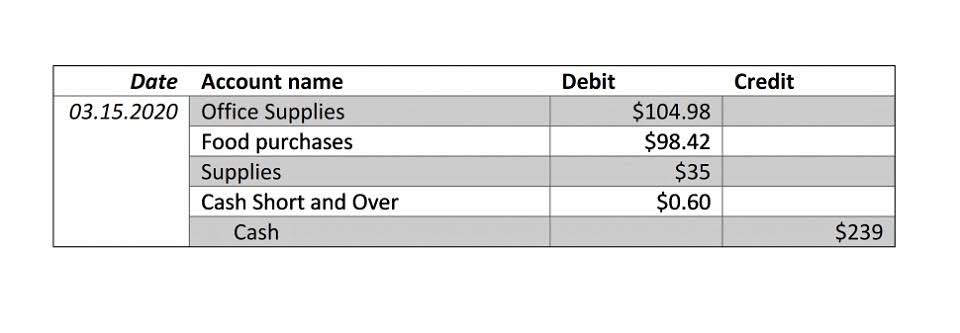
For example, a company may manipulate its financial statements by intentionally overvaluing its assets to appear more profitable than it is. The historical cost principle requires companies to value their inventory at the original purchase price. However, in some cases, companies may choose to use specific identification to value their inventory.
Examples of the Cost Benefit Principle
Usually, historical cost accounting is more problematic with long-term assets. Long-term assets are items of value that you do not expect to convert into cash within one year. Examples of long-term assets include buildings, land, vehicles, and equipment. Historical cost and fair value are two phrases describing the original price of an object https://www.bookstime.com/articles/how-to-calculate-overtime-pay and its ups and downs over time.

Assets Have an Objective Value
- This consistency is important because it allows investors and analysts to compare financial statements across different periods and companies.
- In this regard, it is imperative to consider the fact that these activities are used because they are considered to be predominant cost centers for the company.
- Depreciation helps you offset the value of an asset over time on your tax return.
- In accordance with the accounting principle of conservatism, Assets recorded at historical cost must be adjusted to account for the wear and tear through their usage..
- Liabilities are also accounted for using the historical cost principle.
The cost principle monetary unit assumption maintains that all financial transactions are recorded in a consistent currency unit, bolstering the objectivity of historical costs. Meanwhile, the going concern principle presumes that the business will continue its operations for the foreseeable future, validating the use of historical costs over liquidation values. The balance between historical cost reliability and the need for market relevance continues to be an area of dynamic discussion in accounting standards. Despite these developments, the historical cost principle remains relevant and valuable in certain situations, particularly for non-current assets such as property, plant, and equipment. It provides a reliable and objective basis for accounting and helps ensure that financial statements are consistent and comparable over time.

What is the cost benefit principle?

Imagine you are an antique collector searching for the perfect addition to your collection. You come across a beautiful piece of furniture crafted in a bygone era, with intricate details and impeccable craftsmanship. You inquire about the price, and the seller responds with an excessive figure.
- If the original price remains higher than the market value, the market moves downward, and vice versa.
- Long-term assets are items of value that you do not expect to convert into cash within one year.
- However, this may not accurately reflect its true value to the company, particularly if the land is sold at a later date.
- However, years after the acquisition, YouTube’s value increased by many folds because of its popularity, and its base increased because of the rise in internet users and net speed.
- The cost principle is an accounting principle that requires assets, liabilities, and equity investments to be recorded on financial records at their original cost.
- It’s important for students to remember that while the cost principle provides stability, it may not always reflect current asset values as markets fluctuate.
Historical Cost Convention does not apply to certain types of assets such as financial instruments (e.g. cash, trade receivables, investment in shares). The current market value of the machine in its present condition is $6,000. There are several different ways to account for depreciation but, in general, depreciation is treated as a loss and is expensed throughout the asset’s useful life.
- The historical cost principle states that a company or business must account for and record all assets at the original cost or purchase price on their balance sheet.
- You come across a beautiful piece of furniture crafted in a bygone era, with intricate details and impeccable craftsmanship.
- Cost principle concept applies to companies that use accrual accounting but wish to be GAAP compliant.
- ABC Company issued its financial statements in March for its previous year.
- On the balance sheet, the work truck is still listed at the original cost of $50,000.
- Some argue that the Cost Principle is outdated, and that it no longer provides relevant information to investors and other stakeholders.
Asset values are objective and can be easily verified.
- When using the cost principle, costs are verified by their entries on the books.
- There is no way to find out how much this theft is being traced back in the past.
- Gabriel Freitas is an AI Engineer with a solid experience in software development, machine learning algorithms, and generative AI, including large language models’ (LLMs) applications.
- The going concern principle assumes that a business will continue to operate in the foreseeable future, thus justifying the continued record of assets at their historical cost rather than liquidation values.
As a result of this depreciation expense, the asset’s recorded value decreases throughout its useful life. The historical cost concept differs from the fair value concept, which reflects the current market value retained earnings of a company’s assets. Asset valuation at the original price avoids overvaluation in a dynamic market and is a good way to figure out capital expenditures.

In this example, goodwill must be tested annually for impairment. If it is worth less than the value on the books, then the goodwill is considered to be impaired. If it has risen in value, then no changes are made to the historical cost. This is an example of how cost principle can be detrimental in terms of asset appreciation. It is also an example of how it is advantageous when it comes to depreciation.
What is an Asset?
Like when a company uses their old car and trade-in for a new car. The record would be the new vehicle cost as the cash paid and the trade-in vehicle value. The cost principle is simple and consistent, but can sometimes lead to inaccuracies in financial statements. A long-term asset that will be used in a business (other than land) will be depreciated based on its cost.